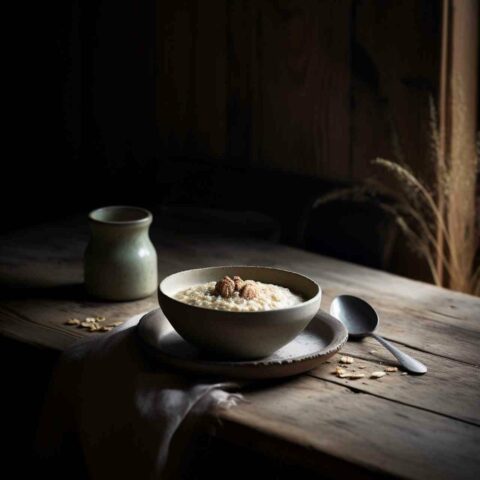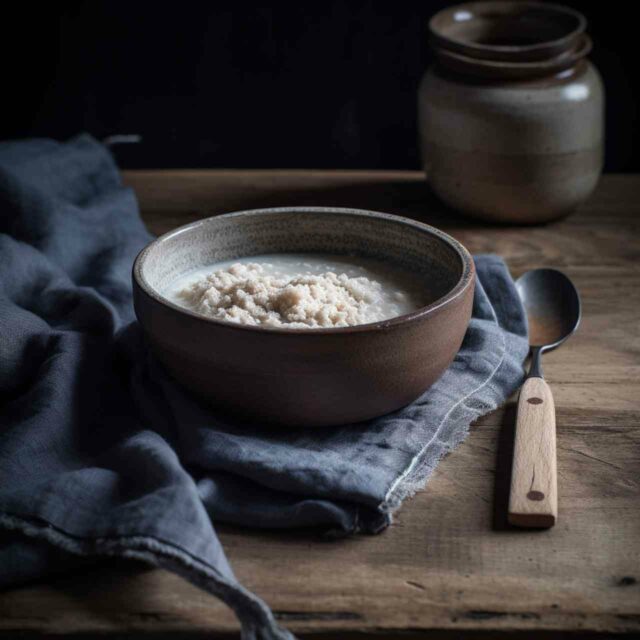How to Sweeten Oatmeal for Diabetics

How to Sweeten Oatmeal for Diabetics: Safe and Tasty Options
As someone living with diabetes, I’m always on the lookout for healthy ways to sweeten my food without spiking my blood sugar levels. Oatmeal is a staple in my diet due to its nutrition and benefits for blood sugar control, but the challenge is finding ways to make it taste better without adding sugars that could negatively affect my health.
In my quest for that perfect balance of taste and health, I’ve discovered various methods to sweeten my oatmeal safely. Fruits and berries, nut and seed butters, certain syrups, and even some artificial sweeteners can be used to enhance the flavor while still maintaining a healthy blood glucose level.
Sugar Alternatives
This not only keeps my oatmeal interesting and palatable, but also allows me to enjoy it without worrying about adverse effects on my diabetes management.
I’ve learned that the key to success is experimenting with different combinations, and being mindful of portion sizes, especially when using natural sweeteners with carbohydrates. This way, I can satisfy my sweet tooth and maintain a nutritious, diabetes-friendly diet. So let’s explore some of these healthy alternatives and find the perfect sweetener method for your oatmeal.

Natural Sweeteners for Diabetics
When it comes to sweetening oatmeal for diabetics, there are a few natural sweeteners that can provide that delicious taste without raising blood sugar levels.
Stevia
Stevia is a natural sweetener derived from the leaves of the Stevia rebaudiana plant. It’s roughly 200 times sweeter than sugar, but it has zero calories and little to no effect on blood glucose levels. To sweeten my oatmeal with stevia, I prefer using either liquid stevia drops or a stevia-based sweetener blend. Just be cautious when adding stevia to your oatmeal, as a little goes a long way! I usually start with a few drops or a pinch and adjust as needed.
Erythritol
Erythritol is a sugar alcohol that’s naturally found in some fruits and vegetables. It has about 70% of the sweetness of sugar but only 5% of the calories, making it an ideal option for diabetics. One of the reasons I like using erythritol in my oatmeal is its ability to provide that familiar sugar-like taste and texture, without the negative impact on my blood sugar. To sweeten my oatmeal with erythritol, I typically use a granulated version, starting with a teaspoon and adjusting as needed.
Monk Fruit Sweetener
Monk fruit sweetener, also known as Luo Han Guo, is extracted from the monk fruit, native to China. This natural sweetener is around 100-250 times sweeter than sugar but has zero calories and no impact on blood sugar levels. I like using monk fruit sweetener in my oatmeal because it imparts a fruity sweetness that’s very distinct and pleasant. Just like with stevia, only a small amount is needed to sweeten your oatmeal; I usually begin with a pinch and adjust to taste.
Remember that when choosing a natural sweetener for your oatmeal, it’s crucial to select options that won’t raise your blood sugar levels. The natural sweeteners mentioned above are excellent alternatives for diabetics, making it possible to enjoy a tasty, sweet breakfast while still being mindful of your health.
Flavorful Add-Ins for Oatmeal
As a diabetic, it’s essential to find healthy ways to add flavor to your oatmeal without spiking your blood sugar levels. Here are some great sugar-free options that can help you enhance the taste while also providing additional nutritional benefits:
Cinnamon and Other Spices
One of my favorite ways to flavor oatmeal is by adding cinnamon. Not only does it taste great, but it also has potential health benefits for diabetics, such as helping to lower blood sugar levels. You can also try other spices like nutmeg, ginger, or cardamom for a unique taste.
Fresh Berries
Fresh berries are a fantastic addition to oatmeal. They not only add natural sweetness but also provide antioxidants, fiber, and essential vitamins. Some of my favorites include blueberries, raspberries, blackberries, or strawberries. Adding berries can help satisfy your sweet cravings without negatively affecting your blood sugar levels.

Nuts and Seeds
Nuts and seeds offer a healthy way to add flavor and texture to your oatmeal. They are packed with healthy fats, protein, and fiber to help you feel fuller for longer. Some excellent choices include:
- Almonds
- Walnuts
- Chia seeds
- Flaxseeds
Feel free to mix and match depending on your personal preferences.
Unsweetened Nut Butters
Adding a dollop of unsweetened nut butter can instantly elevate the taste and texture of your oatmeal. Not only does it add creaminess, but it also provides healthy fats and a bit of protein. Some of my favorite options include almond butter, peanut butter, and cashew butter. Just make sure to choose varieties that do not contain added sugars to maintain proper blood sugar levels.
Preparing Oatmeal for Diabetics
As someone living with diabetes, I have experimented with various ways to make oatmeal a convenient, delicious, and healthy option for my daily meals. In this section, I’ll share my insights on choosing the right oats, cooking techniques, and portion control to enjoy oatmeal without negatively affecting your blood sugar levels.
Choosing the Right Oats
From my experience, it’s essential to use the right type of oats when preparing diabetic-friendly oatmeal. Old-fashioned or steel-cut oats are my go-to options because they have a lower glycemic index (GI) and are less processed compared to instant oats. The low GI helps to prevent blood sugar spikes and keep my diabetes more manageable.
Cooking Techniques
When I cook oatmeal, I always opt for slow cooking methods as they consistently result in a creamier texture without the need for constant stirring. I prefer using a slow cooker and letting the oats cook overnight. This method allows me to wake up to a warm and nourishing bowl of oatmeal, ready for me to add my favorite diabetic-friendly sweeteners and toppings.
Portion Control
One of the most important aspects of my diabetic oatmeal routine is maintaining proper portion control. I follow the American Diabetes Association’s recommendation of consuming about half a cup of cooked oats per serving. It’s enough to satisfy my hunger and provides the necessary nutrients without causing an undesirable effect on my blood sugar levels.
When it comes to sweetening and topping my oatmeal, I avoid using traditional sugar and opt for healthier alternatives, such as:
- Berries
- Bananas
- Applesauce
- Cinnamon
- Stevia
- Xylitol
- Erythritol
- Plant-based protein powders
These substitutes not only provide a natural sweetness but also offer additional health benefits, making my morning bowl of oatmeal a nourishing and delicious meal.
Conclusion
In my experience, finding ways to sweeten oatmeal for diabetics is crucial to maintaining a balanced and enjoyable diet. Having explored various options, I have found that there are several natural and healthy alternatives to sugar that can enhance the taste of oatmeal while keeping blood sugar levels in check.
Some of my favorite methods include adding fresh fruits, such as berries or bananas, which not only offer natural sweetness but also provide essential vitamins and minerals that contribute to overall health. Additionally, incorporating spices like cinnamon and vanilla extract can add a pleasant flavor dimension without affecting blood sugar levels.
Nut butters and coconut flakes can also be beneficial, as they not only add a creamy texture but contain healthy fats that can be beneficial for diabetics. Using alternative sweeteners, like stevia or yacon syrup, can provide sweetness without the negative health effects of sugar, and should be considered when looking for a quick and easy solution.
Remember, managing diabetes does not mean eliminating all enjoyment from your diet. By exploring these various options, you can create delicious, satisfying, and blood sugar-friendly oatmeal bowls that help maintain your health and satisfy your taste buds.
